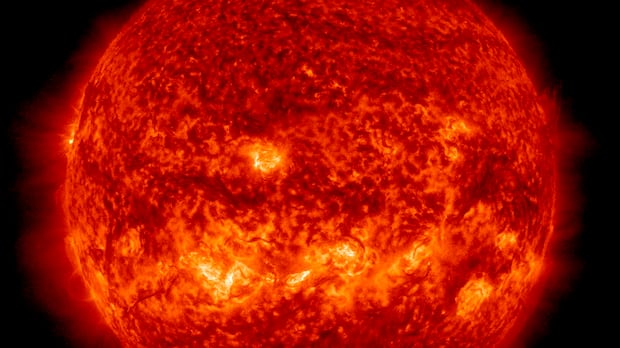Keep an eye on the sky! We may get another intense northern lights display over the coming days
2 powerful solar flares erupted over the past 3 days

The sun is kicking up a storm.
In the past three days, the sun has released three powerful eruptions, two of which may give us another spectacular display of the northern lights.
The Space Weather Prediction Center (SPWC) at the U.S. National Oceanic and Atmospheric Administration is forecasting geomagnetic storms from Thursday into Saturday. But there could be even more heading our way.
The sun goes through an 11-year cycle where it goes from being very active to quiet. Currently, we are in a period when it's very active, with many sunspots.
"What we have been seeing are definitely peaks and waves… and then boom, all of a sudden the sun is is going active again," said Chris Ratzlaff, a seasoned aurora chaser from Airdrie, Alta.
"Quite literally, boom, when it puts off one of these big explosions."

These sunspots have complicated magnetic fields that, when entangled, can snap and produce a solar flare. And, very often, it is followed by a coronal mass ejection (CME), a fast-moving burst of charged particles. If Earth is in the way of the CME, it can interact with our magnetic field and produce incredible displays of aurora, which is referred to as a geomagnetic storm.
Solar flares are marked by their strength, from C to M to the most powerful, X.
Geomagnetic storms go from the weakest to strongest on a scale of G1 to G5. There was a G5 storm in May.
On Tuesday, the sun released an X7 solar flare. And just this morning, it released an X9.
As of publication, the SPWC has not issued a geomagnetic storm watch for the X9 flare. But there is a chance that the X9 could catch up to the X7, which increases our chance of a particularly good display of auroras.
Notoriously unpredictable
There is no real limit for the X-class of flares. A solar flare in 1859, which was initially estimated to be an X15, set telegraph lines on fire. Some newer research has suggested that it could have even been X45. It is referred to as the Carrington Event, named after Richard Carrington, an astronomer who witnessed the flare on the sun.
The CME that was responsible for the geomagnetic storms in May was preceded by a several X flares, but only around X2. The resulting northern lights, or aurora borealis, could be seen as far south as Puerto Rico.

"The interesting thing about these strong ones is that they they could be visible from within cities," Ratzlaff said.
"The last couple of big ones, they were visible from within Vancouver, Calgary, Winnipeg. Toronto is a little bit trickier, because Toronto's light pollution is really, really strong. But these events bring the aurora quite far south."
And, much like the May event, with two powerful X flares blasting off into space, there's a chance that one may catch up to the other, making the chances even better for an impressive display.
But it's important to note that geomagnetic storms are notoriously difficult to predict. Earth has to be in the right place, and the magnetic field needs to be in the right position.
For those planning to try to get somewhere dark to see them, it's wise to plan ahead.
During the May display, thousands of people took to the roads to try to find the perfect spot to view the northern lights. But it's important to pick a good spot in as dark a sky location as you can, without posing a risk to you or others. Do not pull off the side of a highway; try to find a place with a parking lot. Ratzlaff suggests community centres or even provincial or national parks that are not day-use restricted.
Ratzlaff, who helped start the popular Facebook page Alberta Aurora Chasers, says he never gets tired of chasing those lights in the sky.
"The big thing to take away out of out of these kind of events, is that they are something that that might happen, that might not happen," he said.
"If we could predict these really, really accurately, it wouldn't be as special.... It's the thrill of the chase."


